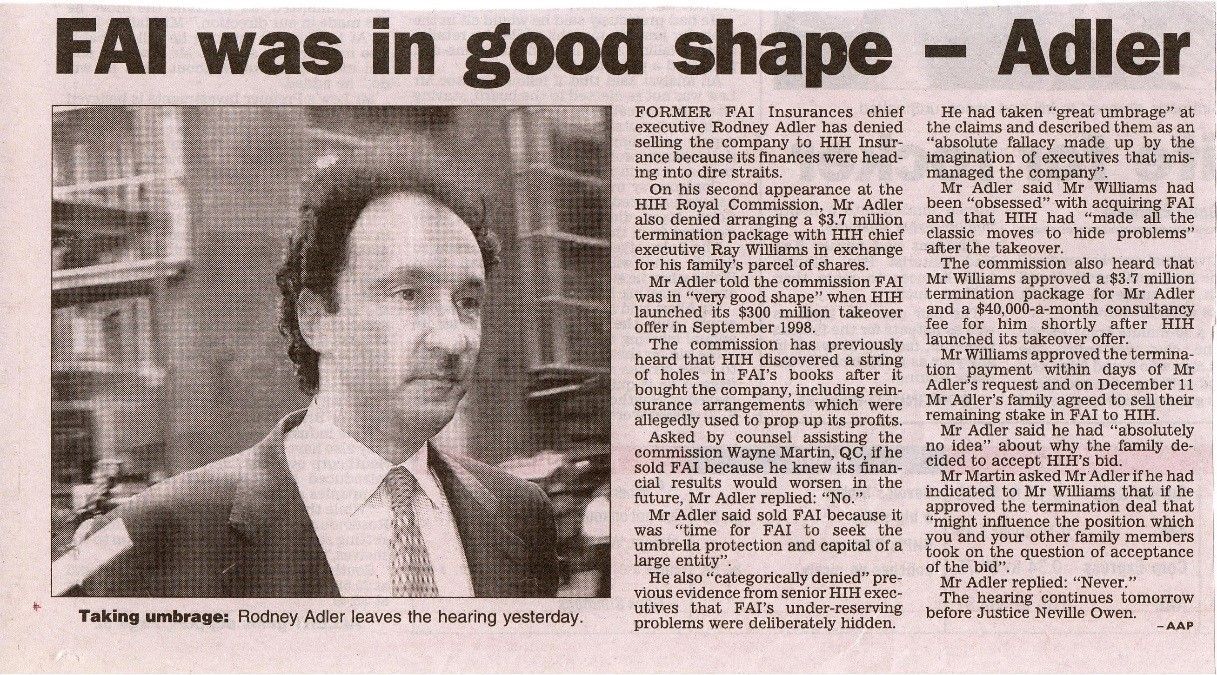By Adam Giliberti
•
June 11, 2023
Attacking the messenger and the message! The practice of preparing valuation reports is well established in Australia. Despite the prevalence of numbers and calculations in a valuation report, valuation practitioners come from a variety of different backgrounds, which are not limited to those with an accounting and/or finance background. This has led to a haphazard and ad-hoc approach to setting quality standards across the body of valuation work in Australia. Attacking the messenger… From July 2008, members of Australia’s two largest accounting professions – the Institute of Chartered Accountants in Australia and CPA Australia – are required to adhere to APES 225: Valuation Services (“APES 225”). This sets out mandatory professional obligations on those providing a valuation service and has helped lift the quality of valuation reports. However, valuers who are not members of the accounting professions in Australia do not have to comply with APES 225. Up until 2014, there was no professional body in Australia that formally recognised practitioners who prepared valuation reports on businesses, part interest in businesses or legal entities, intangible assets and intellectual property rights. In late 2013, the Institute of Chartered Accountants in Australia, merged with its counterpart in New Zealand (to form Chartered Accountants Australia and New Zealand) started a process of inviting its members who practiced in providing valuation services to become formally accredited as Business Valuation Specialists. This process required members to demonstrate a requisite number of years practical experience in addition to rigorous formal education. Those members which met the assessment criteria set by the Institute of Chartered Accountants are now are called ‘CA Business Valuation Specialist’. The concept of accredited specialists is not new to the legal profession. The benefits for lawyers and their clients, where lawyers are promoted as having formal accreditation in a particular area of law are apparent. It is hoped that the promotion of CA Business Valuation Specialists will also benefit lawyers and their clients as it will provide additional comfort that the quality of valuation reports prepared for dispute purposes will be fit for its purpose. Attacking the message… Unfortunately, there are still numerous business valuation reports prepared for dispute resolution purposes that are not fit for purpose. Here are the top 7 common problems we have encountered with business valuation reports: 1. Inappropriate ‘standard of value’ adopted in a valuation report. There are subtle but important legal differences between concepts such as ‘fair market value’, ‘fair value’ and ‘value to owner’ to name just a few different types of standard of value. This potentially means the value opinion could be materially different depending on the appropriate standard of value to be adopted. For example, in family law and compulsory acquisitions matters, ‘value to owner’ principles prevail. In shareholder/owner disputes, ‘fair value’ principles may be the relevant standard of value to adopt. Commonly, business valuations are prepared with ‘market value’ or ‘fair market value’ definitions – it is therefore not surprising that some business valuers struggle with the nuances and practical application of a different standards of value. There are numerous examples of courts rendering valuation reports as inappropriate purely on the basis that the wrong standard of value has been adopted. 2. Confusion between what is actually being valued in a business valuation report. The following concepts have very different meanings and therefore the value attached to each can be significant: ‘company’ or ‘entity’ value (where a legal entity other than a company is being valued; ‘business’ or ‘enterprise value’; ‘share’ or ‘equity value’ (where a part interest in a legal entity other than a company is being valued); and A parcel of shares or investor value. We have seen valuation reports which use all of the above terms inter-changeably which leads to confusion as to what is actually being valued. Lawyers instructing business valuers are not expected to know what precise term should be used in an instruction letter, however it is incumbent on the business valuer to clarify exactly what is being valued and provide a clear definition of this so as to not mislead readers of a valuation report. 3. Mismatch between the discount or capitalisation rate and earnings base. The following are different types of earnings bases: Earnings Before Interest Tax Depreciation and Amortisation (“EBITDA”); Earnings Before Interest Tax (“EBIT”); Net Profit Before Tax (“NPBT”); Net Profit After Tax (“NPAT”); Net Cash Flows before Interest; and Net Cash Flows after Interest. It is inappropriate, for example, to observe a published EBITDA multiple for a comparable company and apply an adjusted EBITDA multiple to the subject business’ EBIT, NPBT, NPAT or any other earnings base other than EBITDA. Similarly, it is also inappropriate to observe a published Price Earnings (“P/E”) multiple for a comparable company and apply an adjusted P/E multiple to the subject business’ EBIT, EBITDA, NPBT or any other earnings base other than NPAT. 4. The Future Maintainable Earnings figure is simply a 3 year average of the reported historic profits. Accounting profits can easily be manipulated by business owners simply because there is so much discretion available to the business owner. For example; Owner remuneration can be easily adjusted and the actual remuneration package can be disguised by unreported private fringe benefits. Business profits can be channelled indirectly to business owners via related party transactions. Travel and entertainment can be quasi-business related expenditure. The business premises can be owned by related parties with rent charged on a non-commercial basis. In addition to the above discretionary items that may require adjustment to the historic reported profits, the following are some additional considerations which may warrant it inappropriate to adopt a 3 year historic average of reported net profits: Expenditure or income relating to surplus assets (eg property) may be included in the profit & loss statements thus distorting what is the business’ normal earnings. The business requires significant future capital expenditure which is different to historical levels. The business suffers from a shortage of working capital either due to seasonality or more systematic liquidity issues. The products/services sold by the business and/or the industry it operates has passed through the maturity phase into a decline phase. The business operates in a volatile industry with fluctuating profitability. Despite what is apparent from so many valuation reports, simply averaging the last 3 years of reported profits is not a standard valuation procedure! What is appropriate is to attempt to ‘normalise’ the operating profits of the business and apply professional judgement to form a view that the level of normalised operating profits can be sustained into the future. 5. There is an insufficient understanding of the business to justify the discount or capitalisation rate. From a layman’s perspective, one of the biggest ‘mysteries’ of many valuation reports is how the valuer arrives at a discount or capitalisation rate. The valuer may be criticised, rightly or wrongly, that the report is devoid of any market data supporting the discount or capitalisation rate. The reality is that for many non-listed entities, particularly smaller businesses, is that there is very little, if any market data available on what the discount or capitalisation rate should be. Even if market data is available, there are often more reasons to not blindly rely on the data and apply a good dose of professional judgment regarding the discount or capitalisation rate based on the valuer’s understanding of the economy, industry and business specific risks. A high quality business valuation report will include sufficient detailed about the valuer’s understanding of how the business operates in isolation and within its environment. S.W.O.T analysis, Porter’s 5 Forces analysis, Life Cycle Analysis are all relevant analytical frameworks available to a business valuer to guide and rationalise the professional judgement applied regarding the discount or capitalisation rate. 6. Inappropriate valuation methodology and/or lack of cross check valuation methodologies. It is commonly stated that valuation is an art, not a science. I personally do not subscribe to this kind of commentary but I do admit that ‘value’ can be highly subjective – one person might perceive little value in a business whereas another person may perceive something very different. The challenge for valuers is to not become exposed to the vagaries inherent in simply stating that professional judgement has been applied and rationalise the basis for selecting the valuation methodology. Where possible, the valuer should look to adopt different valuation methodologies to cross-check or sense-check the valuation conclusion. 7. The valuation report was too cheap which compromised its quality. While in most commercial settings, the professional fees for the preparation of the valuation report will not be known, in litigation settings it is relatively easy to obtain this information. In some instances, it may be possible to establish that the published author of the report may have hardly worked on the report with a junior (who may not have formal professional qualifications) doing a significant bulk of the work in order to deliver a report for the quoted fees to win the job in the first place. In preparing a valuation report, there are often standard paragraphs and standard processes which can be followed which can lead to ‘cookie-cutter’ mentality by some firms offering cheaper valuation services advertising streamlined processes. All valuation reports prepared for litigation purposes will need to state compliance with court rules. With cheap reports, it’s not too difficult to find something that does not comply with court rules – usually that something is the lack of reasonable inquiries made by the valuer to support the veracity of material assumptions provided to him/her. Summary… If you are staring at a valuation report that doesn’t quite sit well with you, contact us.












